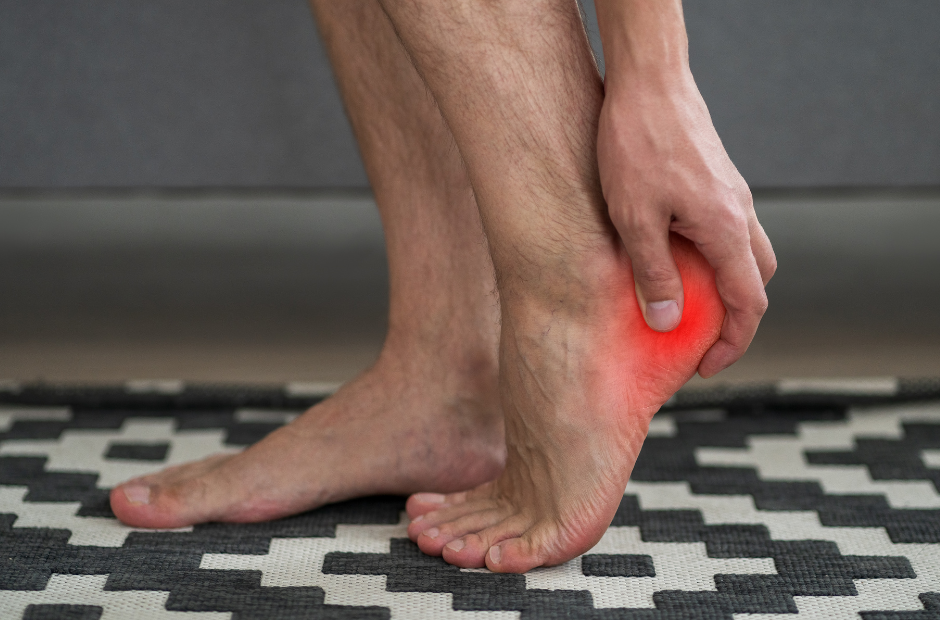Beating Bone Spurs and Handling Haglund’s Deformity
Bone spurs and Haglund’s deformity are two common conditions affecting the heel that can cause pain and discomfort to those they affect. While the two often occur together, they also have distinct characteristics and can lead to various complications if left untreated.
Northern Ankle Foot Associates wants you to be properly informed and prepared to act when these issues arise. In the following blog, we’ll lay out the characteristics and complications that define bone spurs and Haglund’s deformity, then review potential solutions.
Bone Spurs
A bone spur, or exostosis, is a bony outgrowth that forms on the back of the heel.
- They are often caused by chronic inflammation or overuse, which can lead to the formation of new bone.
- Bone spurs can be asymptomatic, but when they irritate surrounding tissues, they can cause pain and inflammation.
Haglund’s Deformity
Haglund’s deformity, also known as a pump bump, is a bony enlargement on the back of the heel.
- It is often caused by repeated trauma to the heel or engaging in activities that put stress on the Achilles tendon.
- Haglund’s deformity can lead to inflammation of the Achilles tendon, which in turn will increase the odds of other issues (more on that shortly).
Potential Complications
If left untreated, bone spurs and Haglund’s deformity can lead to several complications, including:
- Chronic pain:
- Persistent heel pain can significantly impact a person’s quality of life, limiting their choice of activities and inflicting serious stress.
- Achilles tendonitis:
- Inflammation of the Achilles tendon can lead to pain, stiffness, and even a partial or complete rupture.
- Bursitis:
- Inflammation of the bursa, a fluid-filled sac that cushions the heel bone, can also occur. This painful condition can sometimes be managed via ultrasound guided needle injections.
- Limited mobility:
- Chronic heel pain can make it difficult to engage in activities that require walking, running, or standing for extended periods.
Treatment Options
The treatment for bone spurs and Haglund’s deformity will depend on the severity of the condition and the patient’s symptoms. Non-surgical options may include:
- Rest and ice: Resting the affected foot and applying ice can help reduce pain and inflammation.
- Orthotics: Custom-made orthotics redistribute pressure, reducing stress on the heel.
- Shoe modifications: Wearing shoes with a wider toe box and adequate heel cushioning can help prevent further irritation.
- Physical therapy: Stretching exercises and strengthening exercises can help improve flexibility and reduce pain.
In severe cases, surgery may be necessary to address bone spurs or Haglund’s deformity. Options may include:
- Excision: Removing the bone spur or bony enlargement.
- Release of the Achilles tendon: Releasing the Achilles tendon to alleviate tension and reduce pressure on the heel.
- Fusion: Fusing the joint at the back of the heel to correct the deformity.
Reducing Your Risk
While it may not always be possible to prevent these problems, certain lifestyle changes can help reduce your risk of both.
Stretching your calf muscles can help prevent tightness and reduce stress on the heel. To start, you might consider a seated calf stretch:
- Sit down on a chair with your legs extended straight out in front of you.
- Place a towel under the foot of the leg you want to stretch.
- Gently pull the towel towards you, keeping your heel on the floor.
- Hold the stretch for 30 seconds, then switch legs.
- Repeat several times a day to improve calf flexibility and reduce stress on the heel.
It also helps to maintain a healthy weight; after all, excess weight can put additional stress on your feet. Finally, be sure to take breaks from standing or walking when you need to. If you spend long periods of time on your feet, take frequent pauses to rest, stretch, and recuperate.
If you are experiencing heel pain that’s severe or long lasting, it’s important to see a podiatrist for a proper diagnosis and treatment plan catered to your specific needs. As always, early intervention can often prevent the condition from worsening and improve your quality of life.
Does the above information give you cause for concern? If so, please reach out to Northern Ankle Foot Associates and contact us today. Dr. Robyn Joseph would be happy to help.


